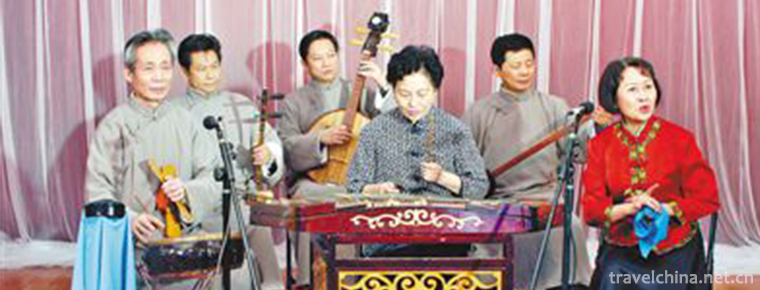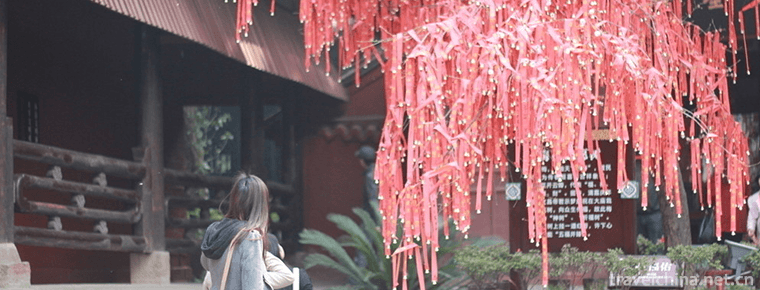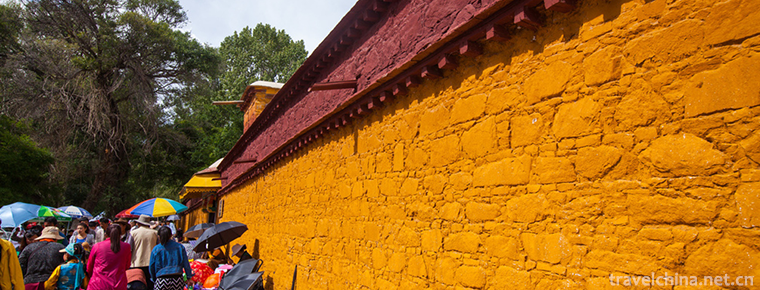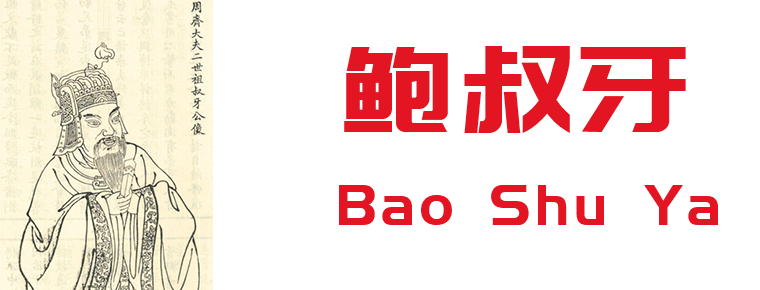Sichuan Yangqin
Sichuan Yangqin
Sichuan Yangqin is one of the representative folk songs of Sichuan Province, which is popular in Chengdu, Chongqing, Luzhou, Zigong and other cities and regions. In the early period, it was also called the yangqin, but later it was changed to the yangqin. It was formed in the reign of Qianlong in Qing Dynasty. By the time of Guangxu, there were more than 100 artists, and they were divided into two groups: Nanhui and Beihui.
On June 7, 2008, Sichuan Quyi Troupe, Chengdu Art Theater and Sichuan Music and Dance Research Institute declared that Sichuan Yangqin was listed in the second batch of national intangible cultural heritage list with the approval of the State Council.
Historical Origin
Yangqin is one of the representative instruments in Chinese national instrumental music. Its tone is clear and melodious, and its artistic expression is very rich. It is especially suitable for playing happy and lively music. It is a trapezoidal instrument with three parts: the body, strings and keys.
Although Yangqin is a kind of Chinese national instrumental music, it is not a native instrument in China. The Yangqin is also called "yangqin", as its name implies, it is a foreign instrument. However, there have been the following statements about its origin:
Firstly, it was inherited from "Karon". "Karong" is a Uygur musical instrument in Xinjiang, China. When playing, the instrument is flat on the table, with a metal bar in left hand and a soft string in right hand. It can also be played with nails in both hands. It is very similar to the Yangqin in appearance, string number and timbre. In fact, "Kalong" evolved from "Galong" in Central Asia. According to the history of the Yuan Dynasty, the "72-stringed pipa" which was collected in Kashmir in the Yuan Dynasty was probably "karon", but it appeared in the Yuan Dynasty or earlier, but the Yangqin first appeared in Guangdong in the Ming Dynasty in China, which was far from the time and geographical position, so this statement was rarely adopted.
Second, it was introduced by Bose. This is a widely accepted saying nowadays. According to historical records, the dulcimer originated in Central Europe, Arabia and Persia, then known as Santul, and then spread to Europe, North America and Oceania. It has the names of Darcima, Hinbaron and Heckbury. At that time, the striking tools were wooden hammers with clear and spacious timbre. The earliest appearance of the dulcimer in China was in the late Ming Dynasty. Due to the industrial development of Ming Dynasty and the cultural exchange between China and the West, it is possible for such instruments to be introduced.
In modern times, the shape of the dulcimer has changed the most. After the introduction of the Yangqin into China, the original form of the two-bridge Yangqin (also known as the "Xiaoqin" or "Butterfly Qin") was mainly used in folk accompaniment of rap music, such as "Sichuan Qingyin", "Sichuan Qinshu", "Beijing Qinshu", "plum blossom drum" and so on. Although the history of Yangqin in Chinese musical instruments is the shortest, in modern times, the change in form is the largest.
Firstly, in the aspect of chord setting, because the violin has only natural tones (i.e. white keys on the piano), it can not be tuned, which brings a lot of inconvenience to the performance. In 1953, Zhang Zirui used the law of Lv to draw Lv Yangqin from the relationship between the two strings which are horizontally adjacent to Lv and the relationship between the two strings which are longitudinally interrelated to Lv Yangqin. Medium.
Professor Zheng Baoheng of Tianjin Conservatory of Music has made an important contribution in promoting the artistic practice of Lvyangqin. Just as Baha composes music on the piano and promotes the art of the piano, Mr. Zheng quickly explores the rules of Lvyangqin's performance and can use the same technique to arbitrarily shift the spectrums. He also absorbed the strengths of other instruments, created new skimming techniques, and enhanced the performance of the dulcimer.
In 1958, Zheng Baoheng changed the rectangular resonance box of the original Lvyangqin into a semi-circle by removing the silent parts of the front two corners, thus lightening the weight and increasing the range by two degrees. Mr. Zheng has always adhered to the teaching of Lvyangqin and passed on his skills to generations of students, and achieved remarkable teaching results. Xu Xuedong, of Tianjin Conservatory of Music, performed the folk music trio Shahai Yin Poetry (Zheng Baoheng's Song) with Lv Yangqin at the graduation concert. In May 1988, Huanghe, the first master of Yangqin in the Central Conservatory of Music, was concerted by an orchestra and solo with Lv Yangqin, etc. These performances were very successful and Lv Yangqin had great momentum. The changeable timbre amazes the audience. Later, through the research of many folk music experts, the dulcimer has been transformed into four-row variable-tone dulcimer till today's 401 and 402 dulcimer, such as the 501 dulcimer developed by Professor Gui Xili of the Central Conservatory of Music, and the half-tone string method has been added to the high-pitch area to further solve the problem of pitch conversion.
The introduction of Yangqin into China has not only undergone a series of reforms, but also formed four major schools of Chinese Yangqin. At the end of Qing Dynasty and the beginning of Republic of China, along with the development of traditional folk instrumental music, the dulcimer was also absorbed into different forms of instrumental music. Through the continuous practice and accumulation of previous musicians, the dulcimer art has gradually formed its own unique traditional school and local style, with its own excellent traditional repertoire, representative figures, inheritance relationship and performance characteristics, and is loved and recognized by the local people and the people of all walks of life. The most influential traditional schools are Guangdong music yangqin, Jiangnan silk-bamboo yangqin, Sichuan Yangqin and Northeast yangqin.
Traditional repertoire
The combination of narrative and endorsement is often adopted. Except for the beginning and the end of each paragraph and a few lyrics interspersed in the middle of each paragraph to explain the characters, plots or environments in the third person, the main lyrics and pronunciation are the first person language of the characters. The repertoire can be divided into two categories: large-scale repertoire and single-fold repertoire. Big Ben also performs in segments, about half an hour each. Most of the major books are "Three Kingdoms" and "Countries", as well as "Pipa Records", "White Snake Biography", "Jade Hammer Records", "White Rabbit Records", "Qingfeng Pavilion", "Jade Dragonfly" and other tracks. Huang Ji'an, a dramatist in the late Qing Dynasty, wrote such dulcimer versions as "Returning Ji from Dao to Dao", "Black Tiger Margin", "Mulan Entering the Army", "Fisherman's Cijian", which is called "Huang Ben".
After the founding of the People's Republic of China, Sichuan Yangqin has been revived and developed. It has absorbed actresses, developed performances, singing and singing by oneself with many angles. It has created modern songs such as Jiang Jie in prison, Baodao Sending, Qingxi Riverside and Family Visits.
Main features
Sichuan Yangqin is also called "Sichuan Qinshu". It is popular in eastern, western and southern Sichuan, with a history of about 200 years. The performance was originally composed of several people sitting and singing, each playing an instrument accompaniment, mainly the dulcimer, and also drum board, Huai drum, three strings, Beijing Hu, Erhu and so on. Singing is the main method, while speaking is the supplement.
The actors rap in the roles of Sheng Sheng, Dan, Jing and Ugly. Nowadays, there are also the forms of standing singing and sitting singing. Music can be divided into major, Yue Diao (monthly) and instrumental brands. Major tune belongs to the structure of plate cavity, which is the main tone. It is based on a word. It consists of a word, fast word, slow word, second-rate, third-board, big cavity, rudder and so on. It was called "fishing drum and ocean organ" and "big drum and ocean organ" in the early stage. It was named for its main accompanying instrument in performance. After the founding of the People's Republic of China, its current name was changed.
Mainly popular in Chengdu, Chongqing, Luzhou, Zigong and other cities. It was formed during the reign of Qianlong and Jiaqing in the Qing Dynasty (1736-1820). During Daoguang Shih (1821-1850), Yangqin artists in Chengdu have organized three emperors'meetings and regularly performed in teahouses. In 1925, Chengdu opened a dulcimer class, which recruited artists to learn the dulcimer. This was the earliest dulcimer class in Sichuan Province.
Performing Form
"Fishing drum and yangqin" is named for its main accompanying instrument in performance. After the founding of the People's Republic of China, its current name was changed. Mainly popular in Chengdu, Chongqing, Luzhou, Zigong and other cities. It was formed during the reign of Qianlong and Jiaqing in the Qing Dynasty (1736-1820). Its performance is composed of five people sitting in the middle of the front row, three small strings on the left, drums, boards and bangs on the right by one person, and Beijing Hu and Erhu in the back row. The actors played and sang by themselves with their own words. Female characters are often strung back by men, singing in a fake voice. The male role is a combination of true and false voices. Actors are born, dan, duo and ugly, with distinctive pronunciation. The actress has a special way to moisten her voice. The song book is similar to the small opera script, with lyrics of 7 words and 10 sentences. Music is divided into provincial and state tunes. The provincial dialogues are spread in the western Sichuan plain centered on Chengdu, and the prefectural dialogues are distributed in the southern, Eastern and northern parts of Sichuan. The traditional repertoire is about 300 segments, mostly based on historical stories, such as "Huarong Road", "Qingfeng Pavilion", "Capturing Sanlang alive", "Qiujiang" and so on.
Inheritance Significance
Sichuan Yangqin has a strong originality and musicality, and has a unique way of expression and rich accumulation of musical literature. It is one of the main branches of Chinese dulcimer.
On September 15, 2011, the first national intangible cultural heritage base of Sichuan Yangqin was held in Dacisi Community, Jinjiang District, Chengdu.
The heritage base is jointly listed by the Provincial Quyi Troupe and Sichuan Academy of Art. As the first Yangqin inheritance base in the province, the two institutions will work together to integrate the resources of provinces and municipalities and build the base into a platform of exhibition, exchange, inheritance and training. Instead of leaving behind the community, it also makes a new exploration for the intangible cultural heritage into the people's life.
Major Books
Summary of Content
Sichuan Yangqin is one of the important traditional schools of Chinese Yangqin art. This book is based on the previous research results, combined with the author's newly discovered data, a more in-depth, more detailed comprehensive study of its many clues, for the development of Sichuan Yangqin made a more systematic summary and carding. The whole book is divided into seven chapters. The first chapter takes time as the main line and discusses it one by one according to its development process. In the following chapters, the author makes an overall analysis and elaboration on Sichuan Yangqin from the aspects of dissemination and popularization, formation of regional style, change of musical instruments, form of musical art, performance form and representative figures, and comprehensively and systematically clarifies and displays various elements that form the style characteristics of Sichuan Yangqin.
Author's Brief Introduction
Dai Ziyou, Dai Ru, Ziziyou, associate professor of Sichuan Conservatory of Music, was awarded the second prize of Youth Group Yangqin Professional in 1993; the first Youth Professional Group of Guqin Professional Group Bronze Prize in 2002 China Youth Art Competition sponsored by the Ministry of Culture; and the Youth Professional Group Bronze Prize in 2004 National Guqin Competition.
From the age of six, he studied the Chinese national musical instrument Yangqin with his father. He was admitted to Yunnan Art School in 1983 and received professional music training. He was carefully guided by teachers such as Yang Jiande, Zhou Xiuzhu, Liu Xisheng and Yu Yan. In 1988, he graduated with outstanding achievements and was admitted to the Department of Folk Music of Sichuan Conservatory of Music. He studied dulcimer playing with Mr. Chen Fumin and Gumu playing with Mr. Zeng Chengwei. Since graduation, dozens of international meetings of various types of dulcimer and Guqin have been successfully held. More than 100 students have taught dulcimer and guqin. Several textbooks of dulcimer and guitar have been compiled, and the papers "Sichuan dulcimer rheology test" and "Sichuan dulcimer rheology test" have been published successively in "Music Exploration" in 2005 by Guangzhou Company of China Records, Guangling Dispersion"and"Gaoshan Liushui". 》 Guqin performance album
Heritage figures
Every time we talk about Sichuan yangqin, we must mention one person, Li Decai, the Taidou of Sichuan yangqin. Mr. Li Decai has been a skilled musician for 70 years. He has mastered all kinds of musical instruments and has created the "De School" of Sichuan yangqin, which can reach the highest artistic level of "sitting on the ground to convey love" and is praised both at home and abroad.
Li Decai was born in Chengdu, Sichuan, in the winter of 1903. His father, Li Bingfu, is a professional artist of Sichuan Ocean Piano. The family's livelihood depends on his father singing and teaching the piano. When he was young, his family was very poor. He went to private school at the age of four, but he dropped out of school after only two years and went home to learn to sing the Ocean Piano with his father. My father recites the opera to him every day, and he wants to recite it, and he asks to "pull the flowers" (that is, to recite all the lines of the characters in the opera).


-
Xibaipo Scenic Area Pingshan County Shijiazhuang
Xibaipo is located in the middle of Pingshan County, Shijiazhuang City, Hebei Province, with a total area of 16,440 square meters. It was the seat of the CPC Central Committee.
Views: 147 Time 2018-11-24 -
Qiqu Mountain Scenic Area
Qiqu Mountain Scenic Spot is located about 9 kilometers north of Zitong County, Mianyang City, Sichuan Province. It is located at the southern end of Jianmen Shudao Scenic Spot..
Views: 137 Time 2018-12-17 -
Linhai Qishi Scenic Area
Linhai Qishi Scenic Area is located in Tangwanghe District, Yichun City, Heilongjiang Province. Scenic area covers 190 square kilometers. It is a new eco-tourism area and National Geological Heritage .
Views: 186 Time 2019-01-30 -
Luo Bu Lin Ka Roblinka
Roblinka is a national key cultural relic protection unit, located in the western suburbs of Lhasa, Tibet. Founded in the 1840s (Dalai VII), the Dalai Lama's summer administration place is a typical T.
Views: 185 Time 2019-02-06 -
Xingtai Grand Canyon Tourist Area
Xingtai Grand Canyon is a national AAAA scenic spot, a national key scenic spot and a national geological park of China. It is located in Hejiaping Village, Luozhen, Southwest Road.
Views: 238 Time 2019-02-26 -
Firing Techniques of Fengxi Porcelain
Fengxi Porcelain Firing Technology, a local traditional technology in Fengxi District, Chaozhou City, Guangdong Province, is one of the national intangible cultural heritage..
Views: 770 Time 2019-04-29 -
Bao Shu Ya
Bao Shuya (the first 723 years or the first 716 years - the first 644 years). Si Surname, abalone His name is a famous uncle. Yingshang (now belongs to Anhui (person) the Spring and Autumn period Qi S.
Views: 167 Time 2019-09-11 -
Wenchuan earthquake epicenter site
The earthquake site, located in Yingxiu Town, Wenchuan, Sichuan Province, is open all day..
Views: 135 Time 2020-11-07 -
Administrative division of Deyang
Deyang City has 6 county-level administrative divisions (Municipal District 2, county-level city 3, county-1), and 84 township level administrative divisions (street 13, town 67, township 4). It covers an area of 5911 square kilometers and has a population of 3.92 million..
Views: 322 Time 2020-12-14 -
Deyang medical and health
By the end of 2018, Deyang City had 2819 health institutions (including village clinics), including 7 centers for Disease Control and prevention, 7 health supervision institutions, 1 Emergency Center (station), 6 maternal and child health centers, .
Views: 319 Time 2020-12-14 -
Suining economic development
In 2019, Suining's GDP will reach 134.573 billion yuan, an increase of 8.1% over the previous year (the same below) at comparable prices. Among them, the added value of the primary industry was 18.521 billion yuan, an increase of 2.7%; the added value of the .
Views: 348 Time 2020-12-16 -
Guangan location
Guang'an City is located in the east of Sichuan Province, with the geographical coordinates of 30 ° 01 ′ - 30 ° 52 ′ n, 105 ° 56 ′ - 107 ° 19 ′ e, 134.5 km from east to west, 93.6 km from north to south, from Linshui county to Dazhu County of Dazhou City, from.
Views: 359 Time 2020-12-19







